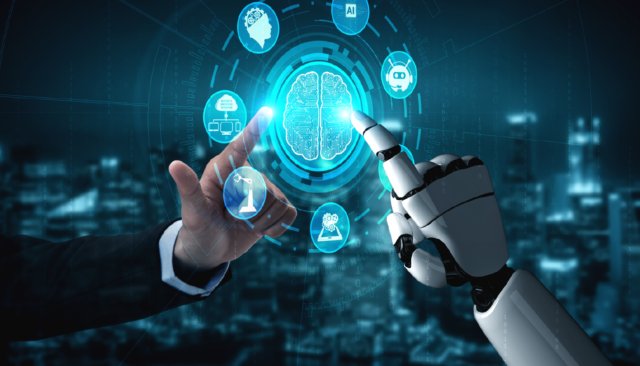
We live in an amazing era of technology-driven transformation that’s redefining how we sell, market, communicate, collaborate, innovate, train, and educate—all in an amazingly short period of time.
Because of this, there are worrisome questions for many in a multitude of different industries: What will happen to my job? Will technology disrupt my business to the point of closing it? The good news is it won’t if you don’t let it!
Customers trust humans
We must not lose sight of the fact that the future is a human future. When it comes to humans, it’s all about relationships and trust. If you don’t have trust, you don’t have a good relationship, no matter how your relationship is fostered.
But trust isn’t something you give and receive freely. Trust is earned through key values, such as honesty, integrity, and delivering on promises—a cross-cultural concept around the world.
Social media and other communication technology connects us to others more than ever before due to the fact that we access it predominantly on our mobile devices. And now with 5G connectivity coming to fruition, the speed at which we can send and receive information and communication will be quicker than ever before.
Despite technological advancements, trust is more important for business success than ever before. For example, with 5G, we may have the speed to automate customer service at our organizations, a feature that permits satisfying customer needs more quickly than a human being can. Yet more than ever, customers actually prefer talking to a human being when having an issue with your product or service.
If an automated help line does not fix their problem, a physical employee just might, even though many worry that people themselves are considered “legacy technology.” We need both technology and human beings in certain scenarios.
Use technology to educate employees
So can you leverage today’s technology to increase the human factor instead of just relying on it to do the job and replace humans with it?
Of course! Let’s look at a department with “human” right in the name: human resources. Because this department trains employees, your human resources staff are now in a position to not only transform their careers, but also transform your organization using technology to improve the human factor.
Education and training do cost money, but they are essential for companies to do, especially in a time of rapid change and transformation we find ourselves in.
You want your people to feel that they’re working for a company that’s vibrant and thriving, but also as I mentioned earlier regarding fear, you want them to feel indispensable within the organization so as not to be replaced by technology.
When you use technology to increase the human factor, you create an engaged workforce that excels. The following are some concepts that will enable our example of human resources to build the human factor in your organization.
Gamification of training
With today’s technology, we can deliver advanced simulations on not only mobile devices, but also on today’s gaming systems. For example, Virtual Reality (VR) headsets allow you to deliver three-dimensional, photo-realistic simulations to train workers—all while making it fun and game-like.
The five core elements of gamification I have identified in the past can dramatically accelerate learning. These include self-diagnostics so an organization can monitor each person’s skill level and progress accordingly; interactivity so people can physically do something other than sitting and watching; immersion, which uses interspatial 3D to allow interaction rather than passive learning; competition, which fosters the adrenaline rush that keeps humans engaged; and focus, a by-product of the other four elements.
Social learning
Today, learning is best implemented as a social activity. By leveraging social learning, companies are empowering their employees to learn collaboratively by sharing their best practices and ideas with each other.
Having an internal social network at your organization facilitates this easily, which cuts down on producing expensive, high-production-value educational videos. Your workforce of employees become both teachers and students thanks to social learning.
Personalized training
Rather than thinking of training and education as things that need to be customized by human resources, technology allows us to reposition them to be personalized.
Artificial Intelligence (AI) is improving every day, and to work with it rather than have it replace employees, we can leverage it in training and education to help personalize an employee’s learning needs based on what he or she can improve on.
Prioritize the human factor
Disruptive technology is a Hard Trend transforming business processes in every industry, so in order to become anticipatory and stay ahead of the curve with your workforce, brainstorm how to use it in training and educate your employees to work better with it.
In doing so, you will raise the human factor in your organization and become a hybrid superpower in your industry, allowing you to further be the positive disruptor and avoid that technological disruption you once feared.
Remember, a hammer is only a tool, much like digital technological advancements. Those tools will only accomplish so much without the human factor. So you can either be passively transformed, letting all of these technologies sweep down upon you and disrupt your world, or you can actively be the disruptor, using these tools to add value to your organization by increasing the human factor.
For more business and entrepreneurship tips, subscribe to our weekly newsletter and follow us on Twitter, Facebook, Instagram and LinkedIn.





